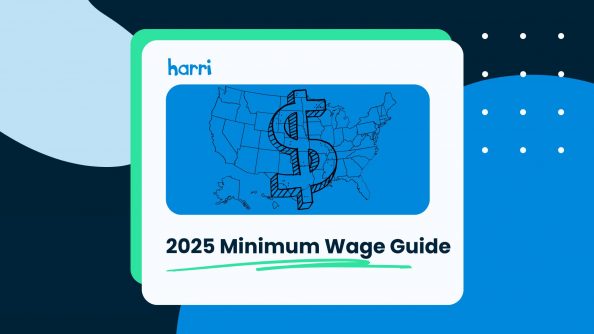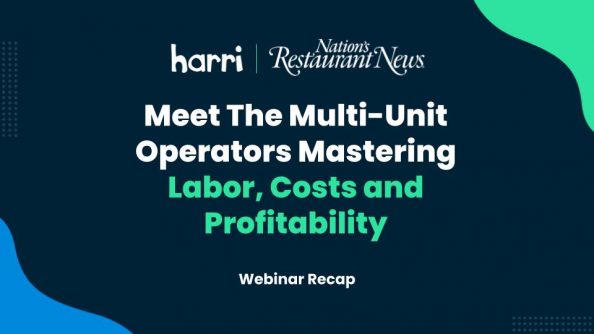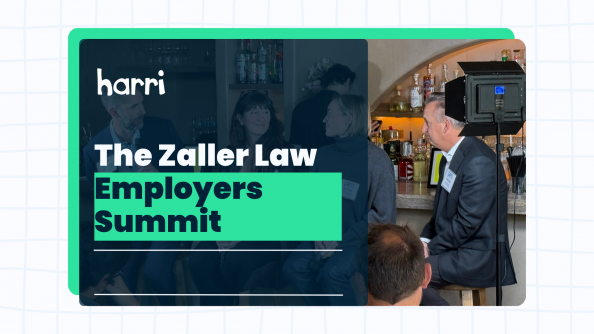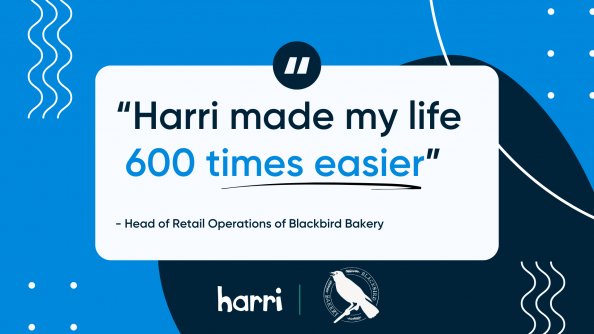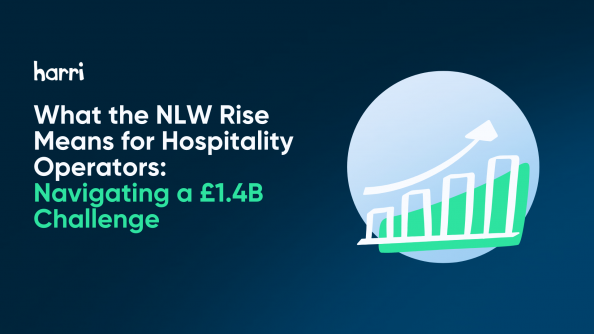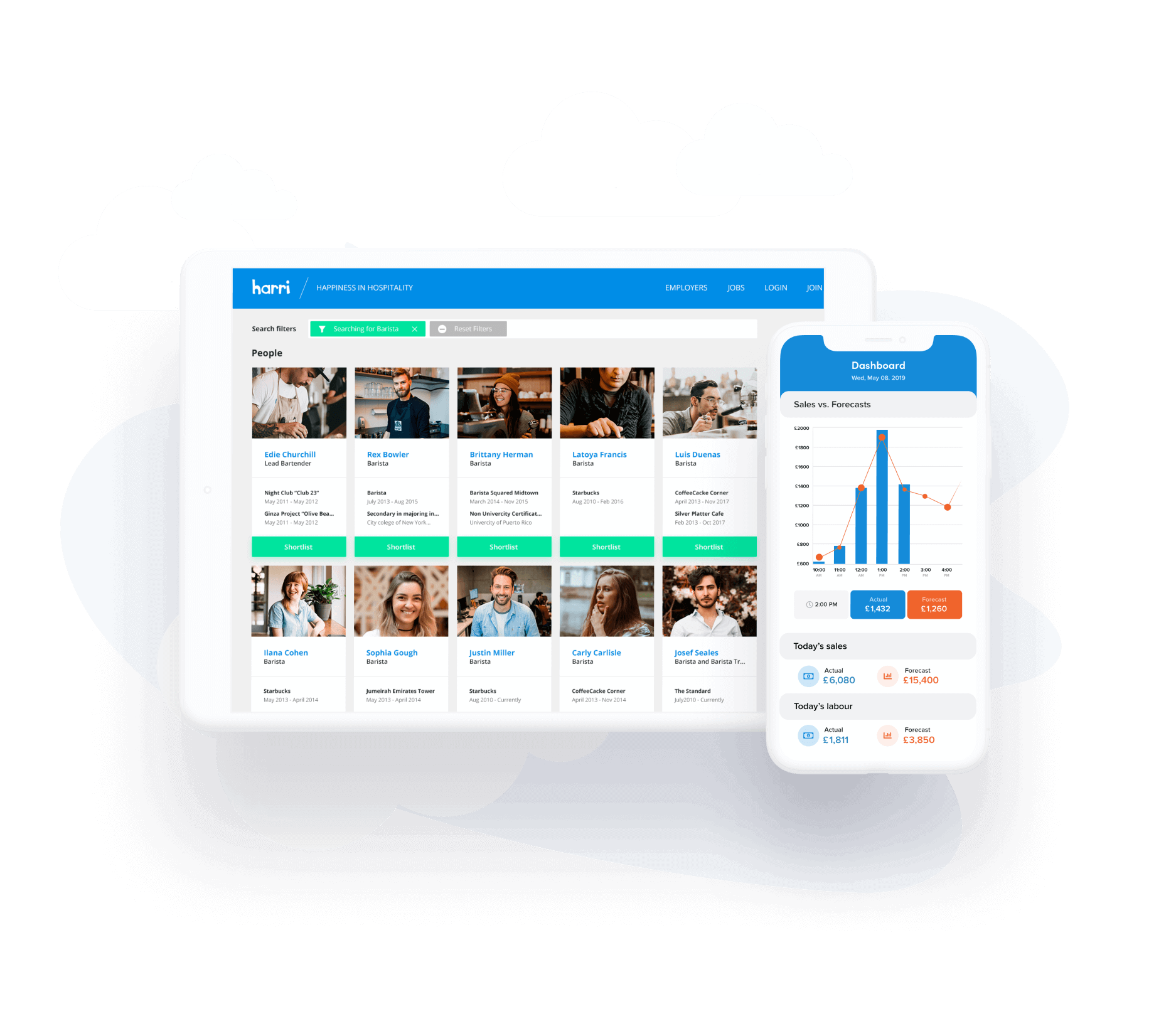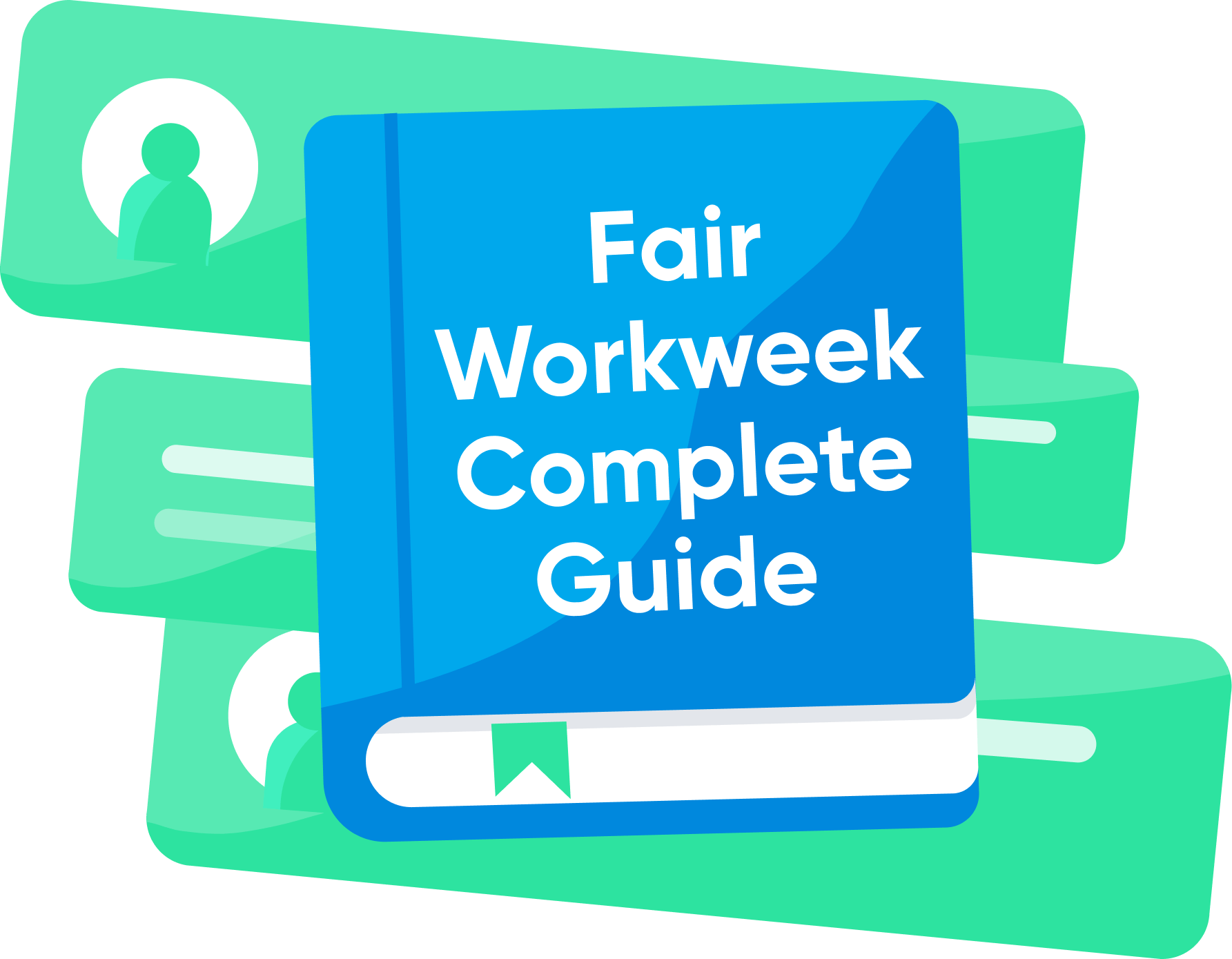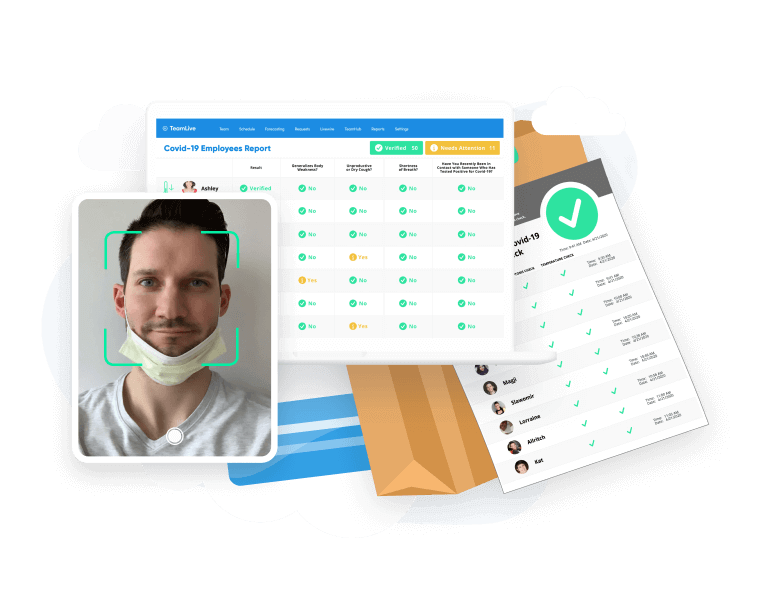One Year Later: What California Operators Need to Know About PAGA Reform
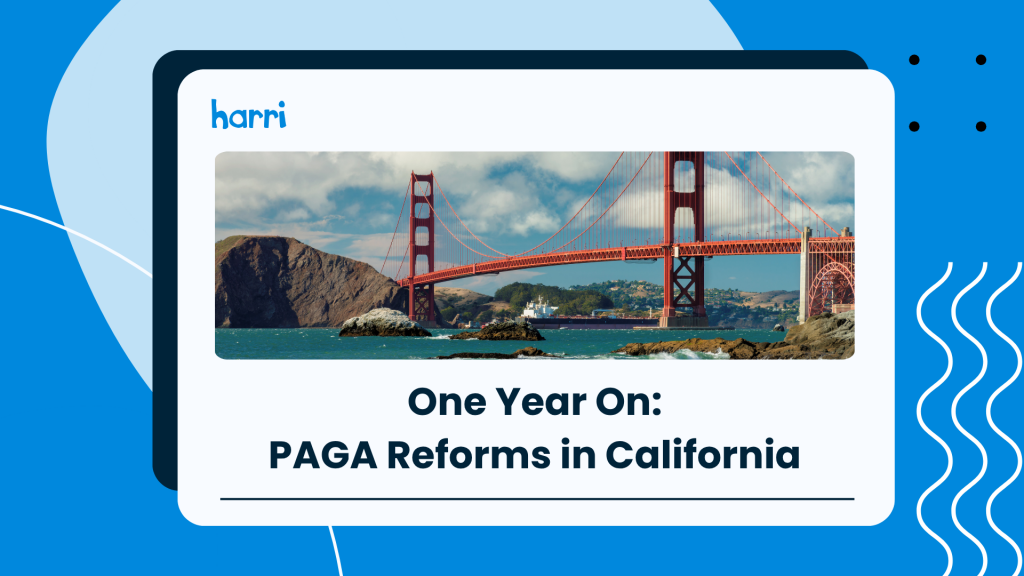
- By Harri Insider Team | June 27, 2025
A recap of insights from our mid-year compliance check-in featuring Zaller Law and Harri
More than a year has passed since California’s PAGA reform took effect in June 2024. While the changes promised relief for employers, the numbers tell a different story – and there are critical steps operators need to take right now to protect themselves.
The Reality Check: PAGA Filings Are Still Rising
Despite reforms designed to reduce employer liability, PAGA filings continue to climb. Anthony Zaller from Zaller Law shared sobering statistics:
- 2025 is projected to see the highest number of PAGA letters filed ever
- Filing numbers have been consistently rising since 2023
- The brief dip after reform quickly rebounded to pre-reform levels
“We’re not seeing a big decrease [in PAGA filings]. If there’s just less money out there, maybe plaintiff’s attorneys have to file more PAGA cases just to keep the volume up.” – Anthony Zaller, Managing Partner, Zaller Law
Why this matters: Plaintiff attorneys are filing more cases to maintain revenue, making it even more critical for operators to demonstrate proactive compliance.
The Game-Changer: Penalty Reduction Opportunities
The reformed PAGA law offers significant penalty reductions for employers who can demonstrate “reasonable efforts” to comply:
- 15% penalty cap if you show good faith compliance efforts before receiving a PAGA notice
- 30% penalty cap if you start compliance efforts after receiving a PAGA notice
Real Numbers: The Impact of Compliance
Anthony provided a concrete example of how dramatic these reductions can be:
Old PAGA (100 employees, 2-year period):
- Potential liability: $2.3 million starting point
Reformed PAGA with 15% cap:
- Reduced liability: $156,000
“You just don’t want to be the low hanging fruit in these types of cases. It’s super helpful to have a client that’s trying their best to comply with the labor code.” – Anthony Zaller
What Counts as "Reasonable Steps"?
The reformed law specifically outlines four key areas that demonstrate reasonable compliance efforts:
1. Periodic Payroll Audits
- You don’t need outside help: HR teams can conduct these internally
- Sample approach works: You don’t need to audit every single record
- Frequency matters: Monthly or quarterly audits are recommended
- Take action: Don’t just audit – implement corrections based on findings
Key audit areas to focus on:
- Meal break compliance and waivers
- Rest break premium payments
- Time rounding practices
- Final pay timing
- Wage statement accuracy
2. Lawful Written Policies
- Update policies at least annually
- Ensure compliant posters are displayed
- Include policies in employee handbooks
- Document policy distribution
3. Supervisor Training on Labor Code Requirements
- Train frontline managers regularly
- Document training topics and attendance
- Issue certificates to create paper trail
- Remember: “Open questions” remain about training duration and content requirements
4. Appropriate Corrective Action
- Address supervisor violations promptly
- Document corrective measures taken
- Show pattern of enforcement
How To Use Technology To Reduce Risk
Our own Katie Goldfield emphasized how technology can help operators stay ahead of compliance issues:
“Our risk analysis dashboard helps operators proactively spot any patterns in their day-to-day operations that might signal noncompliance activity.” – Katie Goldfield, Compliance Research Associate, Harri
How Harri Helps California Operators:
Risk Analysis Dashboard:
- Proactively detects patterns signaling noncompliance
- Flags issues like frequent late clock-ins or short meal breaks
- Tracks adjusted time punches
- Gives operators visibility to “see around the corner”
Modern Time Sheet Capabilities:
- Immediate visibility into break details for managers
- Shows when premiums are due vs. when waivers are on file
- Tracks whether premiums were applied manually or automatically
- Allows filtering by break action types
Automated Break Management:
- Tracks clocking in and out for meal breaks
- Sends attestations to employees
- Monitors compliance patterns across locations
Break Compliance: Critical Best Practices
The webinar provided detailed guidance on meal and rest break compliance – a major source of PAGA claims:
Meal Breaks (30 minutes)
- Track and record: Use clock in/out for all meal breaks
- Don’t block early returns: Allow employees to clock back in for emergencies
- Pay premiums when missed: Document and pay one hour of premium pay
- Use waivers carefully: For shifts under 6 hours, but don’t rely on voluntary waivers
Q&A Insight: When asked about manager approval for employees returning early from meal breaks, Anthony advised: “Generally, I like it when the employee is still able to clock back in and override that… Emergencies come up so they can clock back in should the manager ask them to do that.”
Rest Breaks (10 minutes)
- Don’t track these: California law doesn’t require recording 10-minute breaks
- Train managers to watch: Supervisors should monitor if breaks are taken
- Pay premiums when missed: One hour of premium pay at regular rate
- Document payments: Keep separate line items on pay stubs
“We recommend that the managers are trained so that if there’s a ten-minute rest break that is missed for some reason… the manager records that, and we pay the employee a premium pay.” – Anthony Zaller
Q&A Insight: What happens If an employee doesn’t take their rest break and doesn’t inform management: “If the employer is not tracking it and the employee doesn’t take their ten minute rest break and doesn’t tell anybody, the employer doesn’t know. So I’d argue there’s no obligation to pay the premium pay there.”
Premium Pay Best Practices
- Separate line items: Always show meal break vs. rest break premiums separately on pay stubs
- Create documentation: Having premium payments on record actually helps in litigation
- Train managers: It’s okay to pay premiums occasionally – document and track them
Q&A Insight: When asked about waiving breaks, Anthony noted: “Technically, under law, yes. Employees can waive breaks… but the issue is after the fact, the employee is gonna dispute that in these lawsuits and say, ‘Yes, I didn’t take a thirty minute meal break. I was forced to work through it.'”
The Power of Attestations
Daily electronic attestations can significantly strengthen your defense against PAGA claims:
- Shifts burden to employees who later claim missed breaks (based on 2021 Donahue case)
- Daily is best practice (though weekly is better than nothing)
- Electronic preferred over paper
- Coming innovation: Harri will offer custom attestations in September 2025
“We’re pretty excited because coming out this September, we’re gonna have custom attestations available for our clients to use. Right now, everything is preprogrammed into the platform to very strictly follow the law, but we’ve had a number of customers who’ve requested that we give them the ability to adapt their attestation based on their own day-to-day operations.” – Katie Goldfield
Critical Time Rounding Alert
Important update: The California Supreme Court is currently reviewing time rounding in the Home Depot case, with a decision expected in 2025 or early 2026.
Recommendation: Stop rounding time in California immediately, as the ruling may apply retroactively.
“My prediction is that the court’s gonna hold that employers can’t round time in California, so they have to track the time to the minute.” – Anthony Zaller
California Minimum Wage Updates: July 1, 2025
Numerous California cities implemented minimum wage increases on July 1, 2025, creating compliance challenges for multi-location operators:
Key Compliance Considerations:
- Multi-jurisdiction complexity: Different rates across cities require careful tracking
- Two-hour rule: Many cities apply higher rates if employee works 2+ hours per week in that jurisdiction
- Remote workers: Consider where employees actually perform work
- Existing employees: No need to reissue notice-to-employee forms if new wage appears on pay stub
“This just shows one of the many headaches that most operators are facing. Right? It’s juggling those different minimum wage rates across different cities, especially for an operation that is multi-jurisdictional.” – Katie Goldfield
Harri’s Solution for Multi-Jurisdiction Operators:
“We allow operators to schedule the different wages in advance and the system applies the correct one based on where the employee is clocking in. We also have a tool that allows operators to send out the updated wage notices to their employees all at once, which just saves a lot of time.” – Katie Goldfield
Additional Harri support:
- Routine minimum wage updates as deadlines approach
- Monitoring of pending minimum wage legislation
- Automated compliance tracking across locations
FAST Act Reminder
- Current rate: $20/hour for applicable fast food workers
- No increase yet: Expected increase to $20.70 has not materialized
- Exempt salary threshold: $83,200 annually for exempt employees at FAST Act locations
“We’re constantly monitoring their website to see if they’re posting any sort of updated hearing to discuss that motion that they passed to potentially increase it to twenty seventy, but there’s just nothing out there right now.” – Katie Goldfield
Your Action Plan: Don't Wait
The key message from this webinar is clear: start taking reasonable steps now, before you receive a PAGA notice.
Immediate Steps:
- Conduct a payroll audit (can be done internally with sampling)
- Review and update policies annually
- Train supervisors on break requirements and document it
- Implement daily attestations
- Stop time rounding immediately
- Document everything you’re doing for compliance
“You can dramatically cap your penalties just by demonstrating that you’ve taken proactive compliance steps.”
Katie Goldfield
Enhanced Penalty Risk Warning
The reformed PAGA includes a critical escalation: penalties increase to $200 per employee per pay period if violations are deemed “malicious, fraudulent, or oppressive.”
This creates strong incentive for plaintiff attorneys to argue employers were deliberately ignoring labor code obligations.
The Bottom Line
While PAGA filings continue to rise, California operators now have a clear path to dramatically reduce their liability. The 85% penalty reduction available under reformed PAGA isn’t automatic – it requires demonstrating reasonable compliance efforts.
“The most important takeaway on PAGA today is this, basically: You can dramatically cap your penalties just by demonstrating that you’ve taken proactive compliance steps.” – Katie Goldfield
The time to act is now, before you’re facing a PAGA notice. As Anthony Zaller emphasized: “Don’t just do the audit and don’t take any steps. You need to do the audit, see what corrections need to be made, and then take some affirmative corrections based on those recommendations.”
Email marketing@harri.com to learn more about getting your 2025 PAGA Compliance Certification.




